If you've been following Comet 144P/Kushida, you're in for a treat in February as the comet passes the V-shaped Hyades cluster, and in this guide we'll show you how to photograph it.
Taurus is famous for two large, bright clusters. Arguably, the more compact and vibrant form of the Pleiades, M45, tends to steal the show, but the older, more dispersed form of the Hyades is impressive in its own right.
Located adjacent to the bright-red giant Aldebaran (Alpha Tauri), the Hyades is easy to locate.
Find out which comets and asteroids are in the sky tonight and the 5 brightest comets in 2024.

This month, as well as being a beautiful and well-placed object for photographing on its own, there’s a bonus because comet 144P/Kushida will be traversing along the southern arm of the cluster’s sideways V-shaped pattern, towards and past Aldebaran.
The Hyades is the closest true open star cluster to the Sun, lying at a distance of 153 lightyears.
Although it appears that Aldebaran is part of the cluster, it’s not.
Located just 65 lightyears away, it’s less than half the cluster’s distance, the alignment simply being a line-of-sight effect.
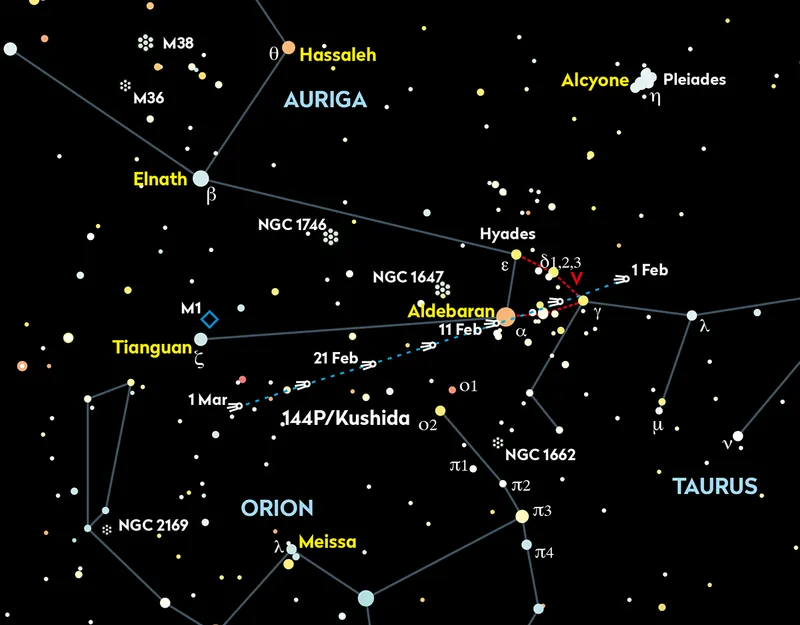
Capturing the Hyades and Aldebaran
Photographically, Aldebaran is easy to record.
Shining at mag. 0.8, it’s a bright and easy-to-spot naked-eye star – just follow the line made by Orion’s Belt to the upper right, as seen from the UK, and this will bring you straight to it.
Many of the Hyades’ stars are also visible to the naked eye, forming a shape like a capital ‘V’ tilted onto its side.
In terms of the constellation Taurus, the pattern is supposed to represent the head of Taurus the Bull, Aldebaran being one eye and the star at the end of the northern arm, Ain (Epsilon Tauri), the other.
The ‘V’ shape is fairly large, each arm measuring 4° in length.
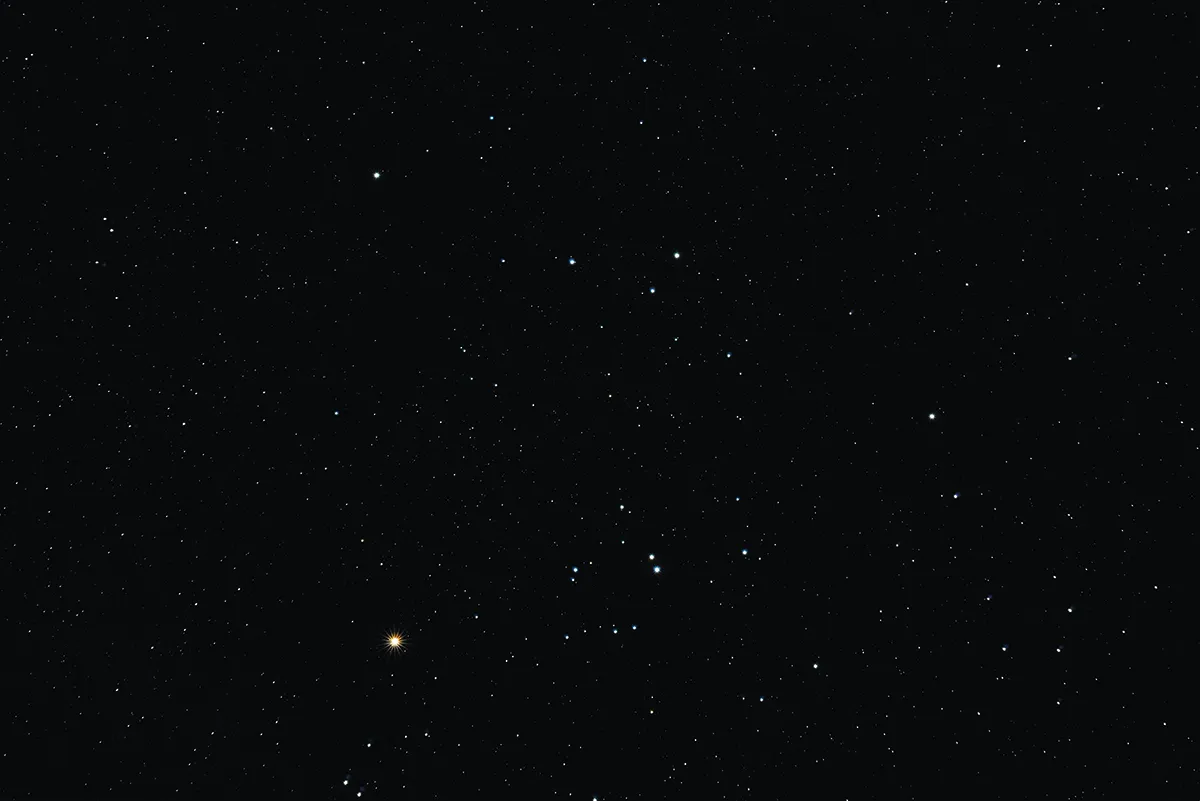
They converge at mag. 3.6 Gamma Tauri. Comet 144P/Kushida is due to pass this star on the night of 4/5 February, thereafter tracking along the southern arm of the Hyades until it reaches Aldebaran on the night of 10/11 February.
With a predicted magnitude of 9.2 at this time, 144P/Kushida is within range of many basic camera setups.
Covering 4° in six nights, its apparent speed isn’t too fast, making it suitable for multi-minute exposures tracked on the stars.
For comets with a high apparent speed, guiding on the comet’s head is required, but that’s not the case here.
Being such a large cluster, a mid- or widefield lens is recommended.
Using a full-frame camera, a 300mm lens will enable you to include the cluster plus some space around it, allowing it to ‘breathe’ in the image.

Go shorter than this and the cluster will feel constrained in the shot.
An alternative is to go even wider and include both the Hyades and Pleiades in a single shot.
Here, the comet should still be obvious, but its coma – the glow around the nucleus region – may appear small. Also consider colour.
Aldebaran and the older stars of the Hyades are orange in colour.
The Pleiades appear white-blue, long exposures revealing a delicate blue reflection nebula.
Comets tend to have a greenish hue. As a result, preserving and recording colour as best you can could lead to a very interesting image.
For more advice, read out guide on how to photograph a comet
Equipment
- DSLR or equivalent
- Tracking mount
- Lens of focal length specified in Step 1 below
Step-by-step
Step 1
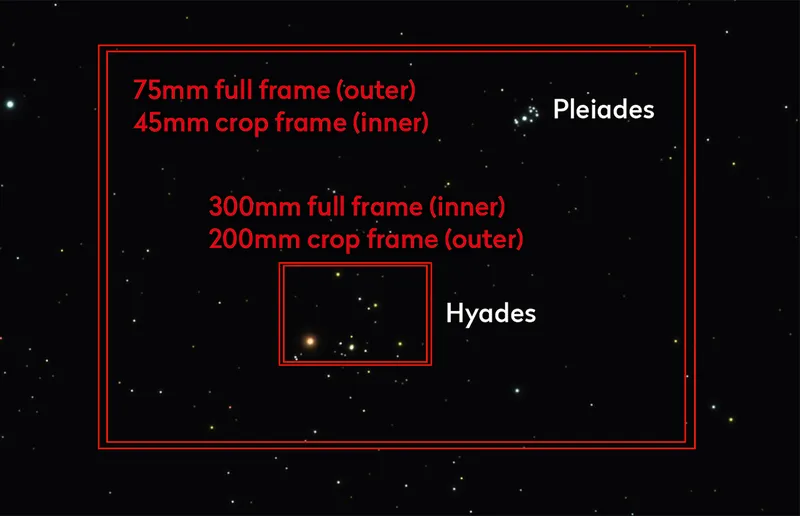
Choose how you want to record the comet’s passage. Do you want to include both the Hyades and Pleiades in the shot or just the Hyades?
If the former, you’ll need a 75mm lens with a full-frame camera or a 45mm lens with a crop-frame. For the latter, we’d recommend a 300mm full-frame lens, 200mm with a crop-frame.
Step 2

A single image of the Hyades and comet 144P/Kushida should be possible without significant trailing of the stars or the comet’s head.
To achieve this, aim for a mid-range ISO and fully open the lens aperture (lowest f/number). Use the ‘500 rule’ to determine the longest exposure you can take without seeing star trailing.
Step 3
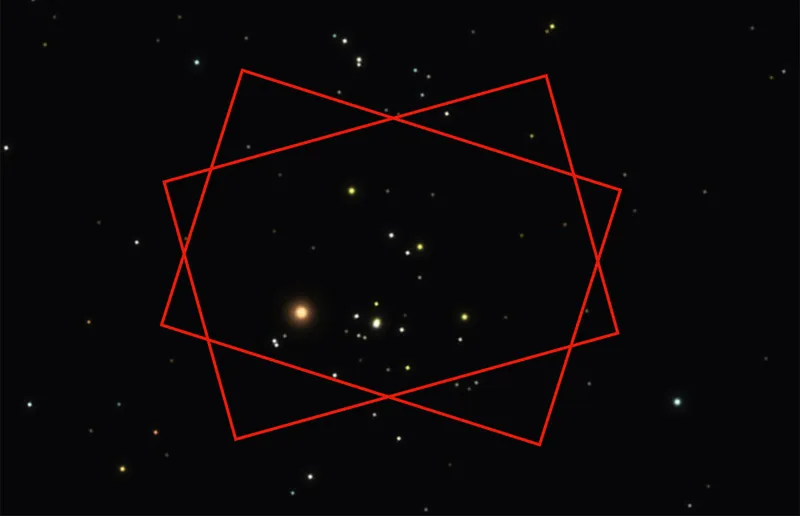
Take your time framing your shot. Space around the cluster(s) allows them to ‘breathe’. Rotate the frame to give you a shot that’s aesthetically pleasing.
Make a note of your first-night framing and repeat that framing for subsequent nights, so you can overlay one image on another to show the motion of the comet.
Step 4

A tracking mount is recommended if you have access to one. This doesn’t need to be an expensive affair and a basic tripod-mounted camera tracking mount is an excellent option.
Polar align the mount as accurately as possible. Don’t rush the process, as this will give you the best chance to obtain sharp stars in multi-second exposures.
Step 5
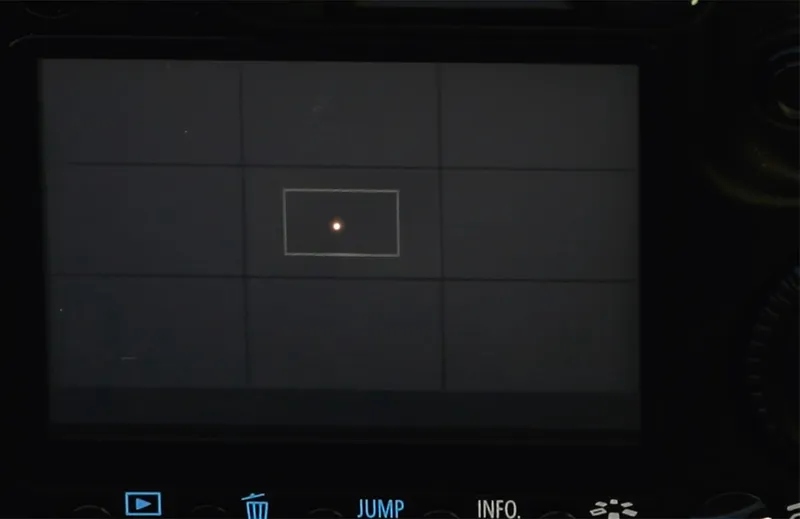
Focus as accurately as you can. Aldebaran is an excellent subject for Live View-enabled cameras.
If tracking, consider lowering the ISO to 400–800, as this will give you a better tonal range – key for bringing out Aldebaran and the comet’s colours. Higher ISO values tend to create washed-out colour and more noise.
Step 6
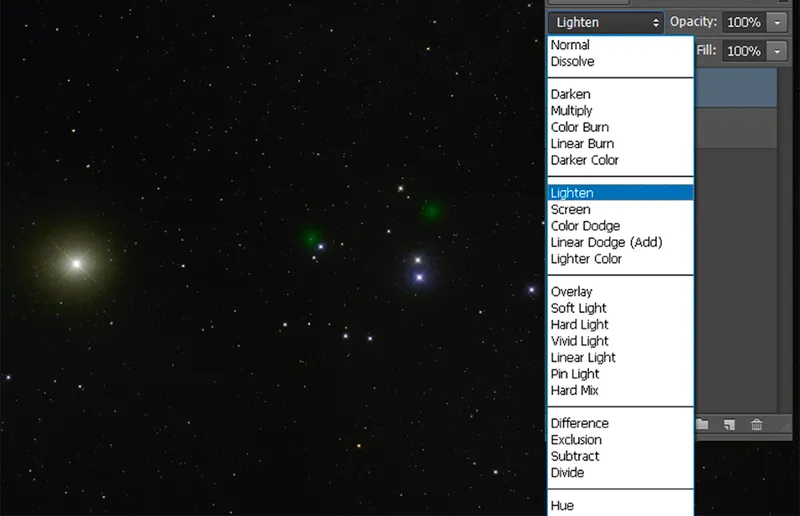
Load each night’s shot into a separate layer of a layer-based editor. With the lowest layer as reference, temporarily reduce each upper layer’s opacity and nudge them so the stars align.
Reset all opacities, then set the upper layer’s blend mode to ‘Lighten’ to show the movement of the comet between shots.
Have you managed to photograph Comet 144P/Kushida? Don't forget to send us your images
